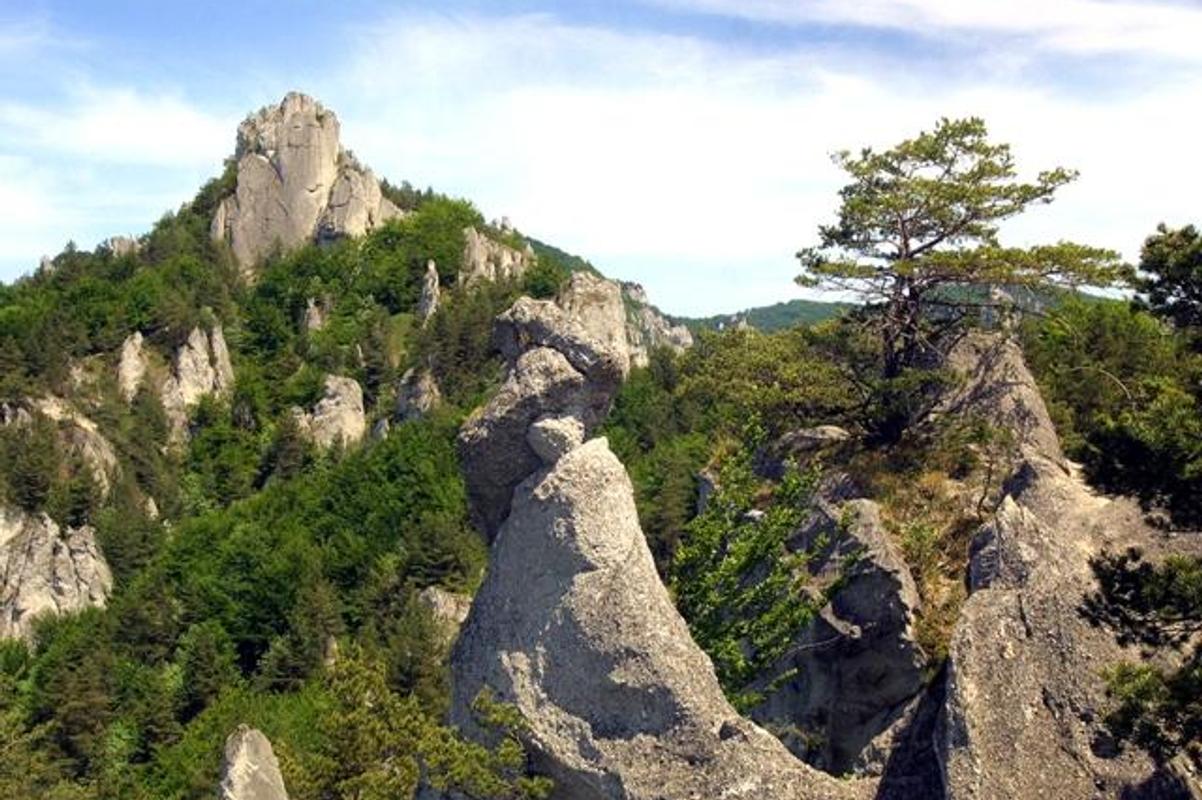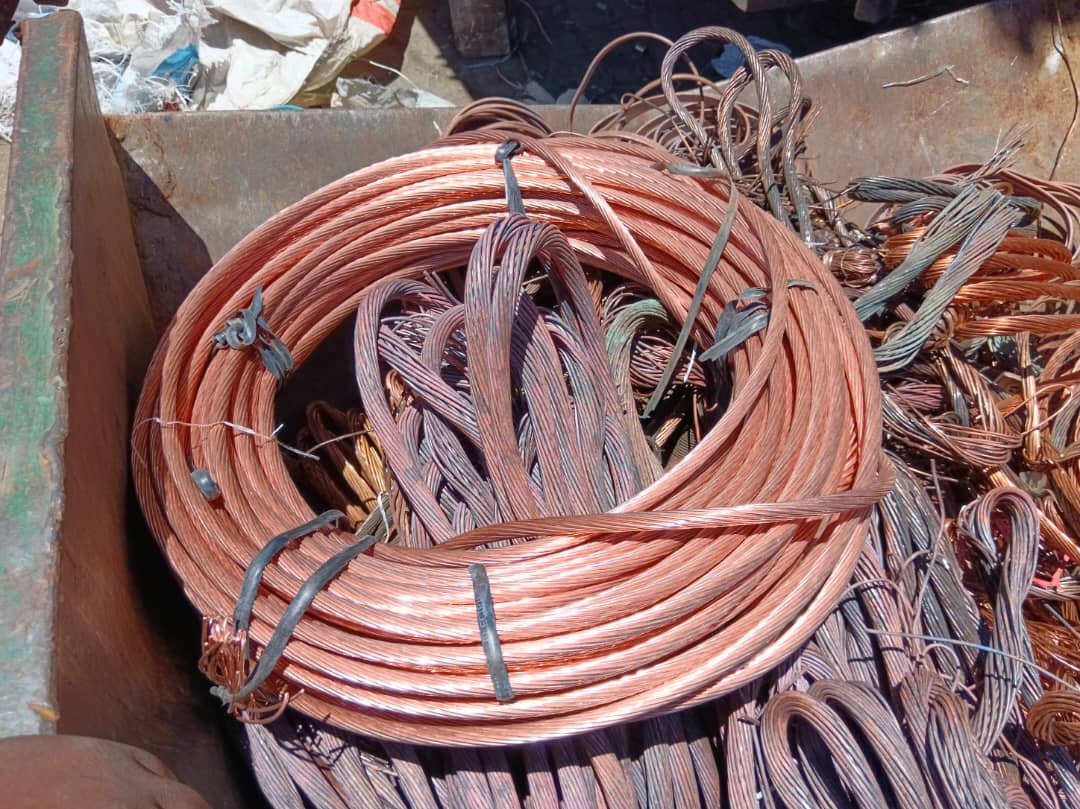By Sita
Copyright sme

From monumental limestone pillars to mysterious caves, Slovakia is home to a remarkable variety of natural rock formations. While some are well-known, others remain hidden in remote valleys and forests, waiting to be discovered.
This guide invites you on a journey to 11 unique sites across the country – each offering a striking visual experience, easy access, and a tangible link to Slovakia’s ancient geological past.
1. Cukrová Homoľa (Slovak Karst)
Rising 105 metres above the canyon floor, this iconic limestone tower is the signature feature of the Zádielska Tiesňava gorge – the deepest gorge in the Slovak Karst in south-eastern Slovakia. The valley also boasts a unique microclimate, creating an exceptional habitat for rare flora and fauna.
How to get there: Start your hike either at the visitor centre in the village of Moldava nad Bodvou or directly from the village of Zádiel. A marked hiking trail leads through the gorge to the base of Cukrová Homoľa. The route is around 2.2-kilometre long with a modest 100-metre elevation gain – a pleasant and accessible walk suitable for families and casual hikers.
2. Chrastianska Šikľavá Skala (Spiš region)
This impressive 40-metre-high, 300–380-metre-wide limestone overhang is especially spectacular in winter, when flowing water turns into a massive ice wall up to 30 metres wide – a truly breath-taking sight. In summer, it becomes a peaceful backdrop for a relaxing nature walk.
How to get there: Park your car in the village of Matejovce nad Hornádom, near the railway station. From there, follow the red cycling trail or meadow paths for around 2 kilometre. The walk takes 20–30 minutes. In winter, take extra care as ice can pose a danger.
3. Markušovský Skalný Hríb (Spišská Nová Ves)
This 8-metre-tall natural formation – the largest “rock mushroom” in Europe because of its distinct shape – features a three-metre-wide cap of harder rock that protects the softer sandstone stem below from erosion. It is part of the national natural monument known as Markušovce Cliffs.
How to get there: Begin in the centre of Markušovce and follow the yellow-marked trail. An educational path will take you to the rock formation in about 50 minutes (elevation 470 metres), and continues toward Matejovce nad Hornádom. The full route is around 6-kilometre long and involves only gentle elevation changes.
4. Jánošíkova Päsť (Lisková, Liptov region)
This dolomite rock formation shaped like a clenched fist is steeped in legend – according to folklore, it was created by the outlaw hero Jánošík himself. The rock rises from a meadow above the village of Lisková and offers stunning views over the Liptov Basin.
How to get there: You can park in the Lisková locality in the village of Vyšné Lúky. From there, a simple field path leads roughly 1 kilomtre northeast to the formation. The walk takes no more than 20 minutes and is suitable for all ages.
5. Bátovský Balvan (Poľana mountains)
This imposing volcanic formation, standing 14 metres tall, was shaped by erosion and frost weathering in the Poľana mountain range, central Slovakia. Surrounded by quiet forest, the boulder is composed of agglomerate rock and is listed as a natural monument. Its remote setting adds a mysterious atmosphere.
How to get there: Start in the village of Hrochoť, where you can park. From there, follow the marked blue trail for about 2.5 kilometres. The route has a gentle elevation and is suitable for less experienced hikers.
6. Stratený Budzogáň (Súľovské Skaly hills)
One of the most recognisable rock features in the Rajecká Dolina valley, the Stratený Budzogáň formation resembles a giant club or weapon. Its distinct shape was created by natural erosion, which stripped away the softer rock to reveal the harder core.
How to get there: Begin your hike in the village of Zbyňov near Žilina in northern Slovakia. A 3.5-kilometre-long educational trail marked in yellow leads to the formation, with an elevation gain of around 300 metres. This moderately challenging trail is suitable for families with older children.
7. Čertova Skala (Budča, Kremnica mountains)
This distinct limestone overhang is often described as a giant mushroom, balanced on a narrow stem. Local legend claims it was placed on the cliff’s edge by the devil himself, to which its Slovak name alludes. The surrounding Boky Nature Reserve is home to rare plants and other intriguing rock formations.
How to get there: Start in the village of Budča near Zvolen in central Slovakia. Follow the yellow trail through the reserve. From the main road parking area, it’s a 2-kilometre-long walk that takes around 30 minutes. The elevation is mild, and the trail is suitable for all age groups.
8. Kamenný Vodopád (Šomoška, Cerová highlands)
Located beneath the ruins of Šomoška Castle in southern Slovakia, this unique geological feature was formed by cooling volcanic lava, which created symmetrical basalt columns resembling a waterfall frozen in place. Below it lies the so-called “stone sea”, a field of basalt fragments.
How to get there: The best access is from the village of Šiatorská Bukovinka. An educational trail with information panels leads to the site. The trail is about 1.5 kilometre-long and takes 30 minutes. It’s an easy walk suitable for children and seniors.
9. Malá Pec rock shelter (Little Carpathians)
A hidden gem in the Little Carpathians mountain range in western Slovakia, Malá Pec is a small rock overhang with a natural cavity, often used as a rest stop during hikes. A nearby fire pit makes this a perfect picnic spot. The area remains largely off the tourist radar, offering peace and quiet.
How to get there: Start in the village of Prašník. Follow the educational trail from Čerenec to Tlstá hora to Malá Pec, which takes about 3 kilometres and roughly an hour. The path has a gentle elevation and is ideal for families and casual hikers.
10. Skalné Okno (Ohnište, Low Tatras)
This dramatic 10-metre-wide natural rock window sits on the ridge of Ohnište at 1,538 metres above sea level. It offers breath-taking views and serves as a scenic highlight of a hike through the Ohnište National Nature Reserve – home to protected species and alpine habitats.
How to get there: Begin in the village of Liptovský Ján in northern Slovakia. The route follows blue and then yellow trails via the Svidovské Sedlo saddle to the summit. The 7-kilometre-long trail takes 3 to 4 hours and requires moderate fitness, but rewards hikers with spectacular panoramic views.
11. Čertova Pec (Považský Inovec, Radošina)
This small cave and rock overhang’s name translates to Devil’s Oven. It is of great archaeological importance. Excavations here revealed traces of human activity dating back to the Paleolithic era – making it one of the oldest known human sites in Slovakia. Its oven-like shape inspired the local name and associated legends.
How to get there: From the village of Radošina in the Topoľčany district and follow a short unmarked forest trail about 300 metres from the local road. The path is simple and short, suitable even for young children. Use a local map or GPS for precise navigation.
Spectacular Slovakia travel guides
A helping hand in the heart of Europe thanks to our Slovakia travel guide, with more than 1,000 photos and hundreds of tourist spots.Our detailed travel guide to the Tatras introduces you to the whole region around the Tatra mountains, including attractions on the Polish side.Lost in Bratislava? That’s impossible with our City Guide!See some selected travel articles, podcasts, traveller info as well as other guides dedicated to Nitra, Trenčín Region, Trnava Region and Žilina Region.



